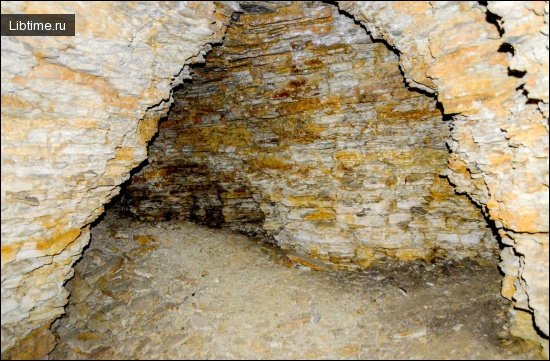Underground leaching
How does the process of leaching of karst rocks proceed? Let us consider this question in general terms on the example of carbonate formations. Natural waters always contain carbon dioxide, as well as various organic acids, which they are enriched by contact with vegetation and seepage through the soil cover.
Under the action of carbon dioxide, calcium carbonate changes into bicarbonate, which is much easier to dissolve in water than carbonate СаСО3 + Н2О + СО2 Са2НСО3.
There is an inverse relationship between the content of carbon dioxide and water temperature. The solubility of limestone increases sharply when groundwater is enriched with acids and salts. Thus, when groundwater is enriched with sulfuric acid, the reaction follows the equation H2SО4 + СаСО3 СаSО4 +СО2 + Н2О.
The carbon dioxide released as a result of this reaction is an additional source of formation of hydrocarbonates. The degree of solubility of gypsum and anhydrite also depends on the presence of certain acids and salts.
For example, the presence of CaCl2 in water significantly reduces the solubility of gypsum, on the contrary, the presence of NCl and MgCl2 in water increases the solubility of calcium sulfate. Dissolution of gypsum can in principle also occur in chemically pure water.
Although we call carbonate and sulfate rocks easily soluble, they dissolve extremely slowly. It takes many, many thousands of years for underground voids to form.
At the same time karst rocks are dissolved and destroyed only along the cracks, outside the cracks they remain still very strong and hard. Penetrating into karst massifs along cracks and tectonic disturbances atmospheric waters are characterized at first mainly by vertical movement.
Having reached a water table or local base of erosion, they acquire horizontal movement and flow usually along the dip of rock strata. Part of the water seeps into deep horizons and forms a regional flow.
In this regard, in the karst massif is allocated several hydrodynamic zones, namely - the zone of surface, vertical, seasonal, horizontal, siphon and deep circulation of karst water. Each of these hydrodynamic zones is characterized by a certain set of karst forms.
Thus, to the zone of vertical circulation of water or to the zone of aeration are confined mainly vertical underground cavities - karst wells and mines. They develop along vertical or gently sloping cracks as a result of periodic leaching of rocks by snow melt and rainwater.
Horizontal caves are formed in the zone of horizontal circulation, where there is a free flow of non-pressure water to river valleys or the periphery of the karst massif.
Inclined and horizontal cavities are noted in the zone of siphon circulation, characterized by pressurized water, which moves in the underflow channels often below the local base of erosion.
In addition to morphostructural and hydrogeological features, the development of caves is also significantly influenced by climate, soils, cave vegetation, cave fauna, and human economic activity. Unfortunately, the role of these factors in cave formation is currently far from being sufficiently studied. It is hoped that this gap will be bridged in the near future.


